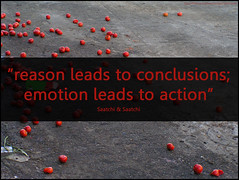We all remember the fun kindergarten event called Show & Tell. Our class had Show & Tell every Friday. I would scour my room or the house for some special nugget I could bring to show the class. When it was my turn, I would stand in front of the class and present my toy or object. The children might ooh or ahh if it was something really spectacular...like my Sweet Secret dolls.
What girl wouldn't ooh and ahh over a pendant or bracelet that changed into a play doll? But then, inevitably, I would lose cool points by then explaining to the class exactly what I had just shown them.
"See, this opens up here, and the legs and arms and head come out like this, and then you close it back up like this. It just snaps closed."
Sure and shootin', there would be more than a few glazed over eyes (especially from the boys). My applause would be measly as I would take my seat. Why? I was already breaking the cardinal rule of SHOW, don't Tell. (Even though, in my defense, it was Show AND Tell Day!)
In Self-Editing for Fiction Writers, Browne and King's first chapter is on showing vs. telling, and every author at some point will hear that line. (Ad nauseum, right?)
I thought the "rule" was hard and fast: NO TELLING.
But that's just not so! In fact, science fiction and historicals tend to lend themselves more toward narrative summary by their very nature (which doesn't help me out, of course, because I don't write those). Still, the authors suggest being creative when conveying information even in these genres (i.e. instead of conveying the history of Hartsford House, have Lord Hartsford pointing out family portraits to guests).
So, on to when and how to use narrative summary (yes, USE it).
1) To Vary the Rhythm and Texture of Your Writing - scenes are to be immediate and engaging, but scene after scene with no break for the reader can be exhausting. You'll want to slow things down every once in a while to give the reader a breather. (This is especially important if you tend to write brief, intense scenes.)
2) To Give Continuity on a Larger Scale - use narration to pass time between scenes. You can capture months or even years with a few short sentences, getting the reader to the more critical scenes that allow for plot development.
3) To Vary Between Lots of Repetitive Action - depending on the characters in your book, you might find yourself writing the same type of scene over and over again. For example, your hero runs in races. If you show the reader all the races as immediate scenes, eventually they will all read alike. But you can summarize the first few races and then leave the latter, more important races to use as immediate scenes, impacting the reader more.
4) When Some Plot Developments Are Not Important Enough to Justify Scenes - if the event involves minor characters who you don't want to spend a lot of word count on, narrate the event. Or if a minor event leads up to key event...just narrate the first event so that the second event is in even more contrast.
So, large-scale narrative summary has its place in our writing! This is happy news for writers everywhere. But what about small-scale telling within our scenes?
The primary way writers indulge in telling and not showing is when trying to convey character traits or emotions. It's far simpler to write, "Paula was depressed," than it is to find an original bit of action or interior monologue that shows she's depressed. Browne and King suggest having her polish off an entire cake. That way, you tell a little more about Paula and how she handles things than just telling the reader the fact of the emotion.
Browne and King write R.U.E. in manuscripts all the time: RESIST THE URGE TO EXPLAIN.
Update: Since I wrote this, I read Camy Tang's Story Sensai Blog and she did a post on this very thing today!















7 comments:
Great summary on the show vs. tell. I think it's imnportant to know that some telling is okay, as long as we have reasons for doing it.
You are getting SO much better at this Jeannie. The way you showed Kathy's unpreparedness (is that a word) in your first scene was awesome. Not a single bit of telling.
As always, your posts are such a great help to me and my writing. Looking forward to more!
your welcome, jennifer...and thanks, katie and donna! :)
Great reminders! I just loved that book. RUE was a new concept to me at the time, and I'm so glad I learned it!
Great post Jeannie! It's definitely work to find the right balance, but it's worth it. I'm still learning all this too. :-)
RUE is one of the key things that I often spot when revising. It's like I need to do double duty in first drafts to cement what I'm aiming for. I cut, cut, cut in revisions.
Great article, and I love this manual too.
Hey--that's my #1 favorite writing craft book! Makes it seem easy, doesn't it? Thanks for the great info!
Post a Comment